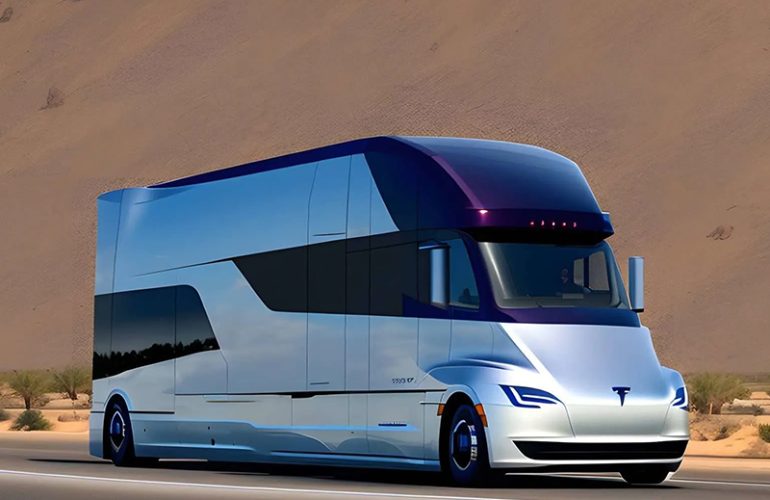Solar lithium batteries are advanced energy storage solutions that combine the power of solar energy with the efficiency and reliability of lithium-ion technology. These batteries are designed to store energy generated from solar panels and provide a sustainable and renewable source of power.
Lithium solar batteries offer homeowners with solar panels the flexibility to stay connected to the grid or even take their home completely off the grid. While lithium solar batteries aren’t the only type of battery compatible with solar panels, they have characteristics that make them the top-selling choice.
Best Solar Lithium Ion Battery
-
Sale!
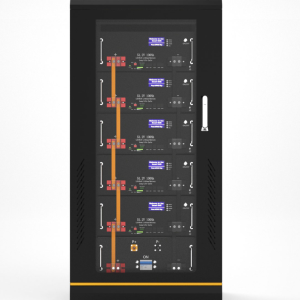
48V Lithium Battery 500Ah
$5,479.00Original price was: $5,479.00.$5,438.00Current price is: $5,438.00. Enquiry -
Sale!
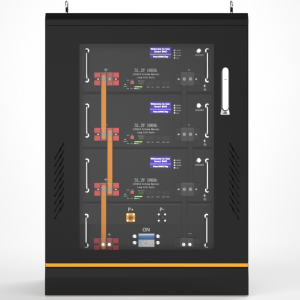
48V Lithium Battery 300Ah
$2,389.00Original price was: $2,389.00.$2,356.00Current price is: $2,356.00. Enquiry -
Sale!
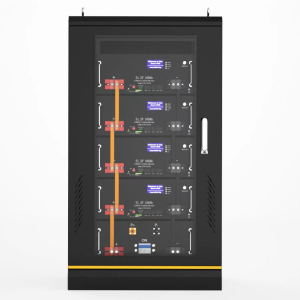
48V Lithium Battery 400AH
$462.00Original price was: $462.00.$423.00Current price is: $423.00. Enquiry -
Sale!
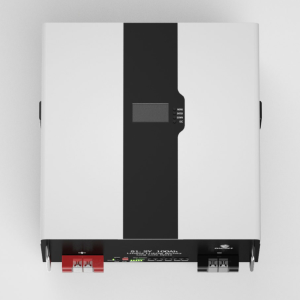
48V 100AH Wall Mounted Lithium Battery
$1,789.00Original price was: $1,789.00.$1,689.00Current price is: $1,689.00. Enquiry -
Sale!
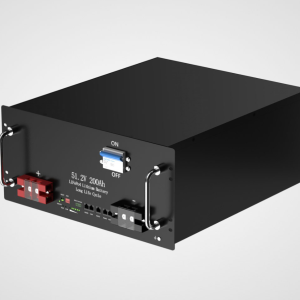
48V Lithium Battery 200AH
$635.00Original price was: $635.00.$612.00Current price is: $612.00. Enquiry -
Sale!
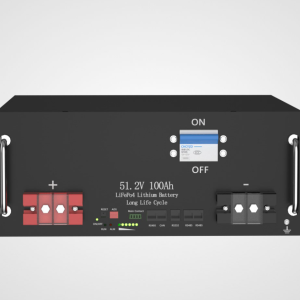
48V Lithium Battery 100Ah
$563.00Original price was: $563.00.$498.00Current price is: $498.00. Enquiry -
Sale!
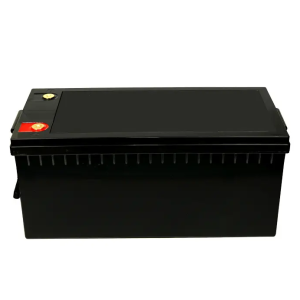
36V 100AH Lithium Lifepo4 Battery
$798.00Original price was: $798.00.$768.00Current price is: $768.00. Enquiry -
Sale!

12V 150Ah Lithium Battery
$689.00Original price was: $689.00.$356.00Current price is: $356.00. Enquiry -
Sale!
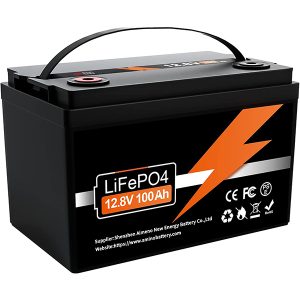
12V 100Ah Lithium Battery
$235.00Original price was: $235.00.$229.00Current price is: $229.00. Enquiry -
Sale!
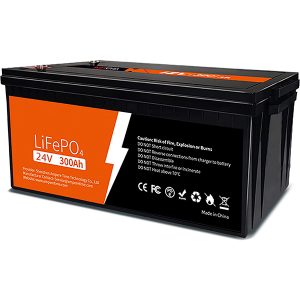
24V 300AH Lithium Ion Battery
$1,387.00Original price was: $1,387.00.$1,359.00Current price is: $1,359.00. Enquiry -
Sale!
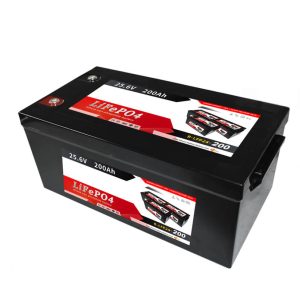
24V 200AH Deep Cycle Lithium Battery
$899.00Original price was: $899.00.$879.00Current price is: $879.00. Enquiry -
Sale!

24V 100AH Deep Cycle Lithium Battery
$598.00Original price was: $598.00.$578.00Current price is: $578.00. Enquiry -
Sale!
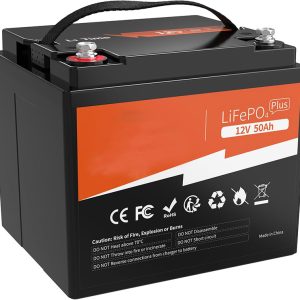
12V 50Ah Deep Cycle Lithium Battery
$335.00Original price was: $335.00.$298.00Current price is: $298.00. Enquiry -
Sale!
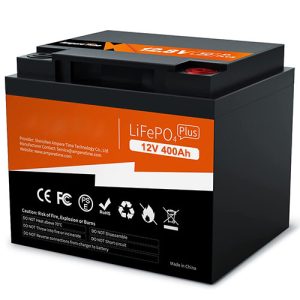
12V 400AH Deep Cycle Lithium ion Battery
$989.00Original price was: $989.00.$958.00Current price is: $958.00. Enquiry -
Sale!
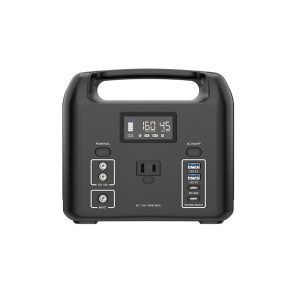
160W Portable Power Station
$198.00Original price was: $198.00.$168.00Current price is: $168.00. Enquiry -
Sale!
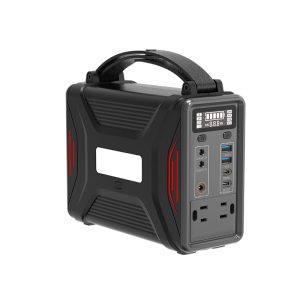
240W Portable Power Station
$326.00Original price was: $326.00.$298.00Current price is: $298.00. Enquiry
What is a Lithium Solar Battery?
When you opt for solar power, you’ll have an array of solar panels installed on your roof. If you’re unfamiliar with how solar panels operate, they gather energy from the sun and convert it into an electric current. This direct current (DC) electricity then flows through an inverter, which transforms it into alternating current (AC), the type of electricity used in homes.
Typically, home solar setups are linked to the local power grid. This means that any surplus energy generated by your solar energy system is directed back to the grid. If your utility provider offers a net energy metering program, you can earn credits for this surplus energy. Conversely, if your solar system doesn’t generate sufficient energy to power your home at any given time, you’ll draw energy from the grid.
Solar batteries are renewable energy storage systems designed to store the energy generated by your solar system rather than feeding it back to the grid. This enables you to utilize the stored energy during periods when your solar panels aren’t producing energy, such as after sunset or on cloudy days. Lithium solar batteries, typically composed of lithium iron phosphate, are commonly used as energy storage devices.
Pros and cons of solar batteries
Just like solar panels, solar batteries come with their own pros and cons. A solar battery can help you lower your electricity costs, provide protection against power outages and lower your reliance on the power grid. However, solar batteries are also very expensive, sometimes costing as much as solar panels themselves.
Depending on your solar system size, you’ll likely need more than one battery. If you plan to go off-grid, be prepared to spend even more money on solar storage.
Advantages:
- Backup power during outages
- Less dependence on the power grid
- Less affected by increases in electricity rates
- Easier energy monitoring
Disadvantages:
- Solar batteries are very expensive
- You might need multiple batteries
- Maintenance costs
How to choose the best solar battery
There’s much more to consider beyond price. You’ll want a battery that matches your household’s energy usage and can output enough power to support your home’s electricity needs. The more large appliances you have, like HVAC equipment, refrigerators, or even electric vehicles, the more power output you’ll require.
You should also consider battery modularity (the ability to add more energy capacity if needed) and compatibility with your solar panels. Since solar batteries are expensive, it’s prudent to compare battery warranties as well. A solar battery typically has a lifespan of five to 15 years, with most manufacturers offering a 10-year warranty.
Choosing a solar battery isn’t easy, and it’s not a decision to be made impulsively. Take your time evaluating all your options and obtaining quotes from different installers to find the best battery for your household’s specific energy needs.
The difference between AC and DC coupling
Your solar battery system will be either AC-coupled or DC-coupled. The major difference between the two is the path the electricity takes from your solar panels into your battery. DC refers to direct current, in which electricity flows only one way, while AC denotes alternating current, where the current changes direction at intervals.
In an AC-coupled system, the electricity stored in your battery needs to be inverted — switched between AC and DC — multiple times before it can power your home. In this setup, DC electricity flows from your solar panels to an inverter, which then transforms it into AC electricity for your home. The AC electricity is then converted back into DC electricity for storage in the battery.
In a DC-coupled system, the DC electricity generated from your solar panels only needs to be inverted once (to AC electricity) to power your home, or it can remain as DC electricity and head straight for battery storage.
Each system type has its pros and cons. AC-coupled systems tend to be easier and cheaper to install, but they are less efficient than DC-coupled systems. DC-coupled systems are more complex and usually more expensive to install, but they tend to be more efficient and have better performance metrics.
Compatibility
Not every solar battery is compatible with every solar panel system. Some batteries are only compatible with a few solar panel manufacturers, while others are more third-party friendly. Before deciding on a solar battery, ensure you know which batteries are compatible with your solar panels.
If you already have solar panels installed but no battery, be aware that some batteries are not compatible with existing solar systems and can only be installed with a brand-new system. An installer should be able to inform you which solar batteries are compatible with your current solar setup.
Battery capacity
A battery’s capacity is the amount of energy it can store, expressed as a unit of power over time, referred to as kilowatt-hours (kWh). The larger the kWh capacity, the more energy your battery can store and use. However, a smaller battery isn’t necessarily inferior; its power output ratings may be lower, but if it meets your needs, then it’s suitable.
Long story short: Size isn’t everything. Install a battery that can meet your home’s energy consumption needs and is modular enough to allow for future upgrades if necessary. To determine the right size battery for your home, consider getting a home energy audit or ask your installer if they can perform one for you.
Battery modularity
A battery’s modularity (or stackability) refers to how flexible the battery’s overall capacity can be. It indicates how easily you can customize your battery to meet changes in your home’s energy requirements. If your home’s energy needs increase over time, you’ll need a larger battery.
When considering a battery’s modularity, ask yourself a few questions: Can I upgrade the same battery, or do I need to purchase an entirely new one? How many batteries can I connect at once? Do they have to be the same size?
For example, let’s say you bought a 12 kWh battery, which is sufficient for now. However, a year later, if you decide to install an EV charger or expand your home, your energy needs might surpass the capacity of your 12 kWh battery. If your battery is modular, you’ll be able to expand its capacity by adding another battery of the same size, installing a different-sized battery, or upgrading your existing battery’s capacity in smaller increments (usually of two or three kWh). The modularity of your battery depends on the manufacturer; some batteries are designed for easy capacity upgrades, while others are not.
Round-trip efficiency
A battery’s round-trip efficiency refers to how efficient the battery is at storing energy. It measures what percentage of the energy supplied to the battery actually gets stored for later use. The higher a battery’s round-trip efficiency, the less energy is lost during the storage process, making the battery more efficient. For example, if a battery has a round-trip efficiency of 80%, this means 20% of the electricity is lost during storage. Most solar batteries have a round-trip efficiency of around 90%.
Depth of discharge
Depth of discharge refers to the amount of energy you can use from the battery relative to its maximum capacity. Most manufacturers disclose a battery’s maximum depth of discharge, which represents the percentage of energy you can safely use from the battery without damaging it. It’s not recommended to completely drain your battery, as this can shorten its lifespan and affect its ability to hold a charge over time. Most solar batteries have both a maximum capacity and a usable capacity, which can be used to calculate the depth of discharge.
Power output
All solar batteries have peak and continuous power output ratings. Peak power output refers to the maximum power the battery can deliver without risking damage, while continuous power output is the amount of power the battery can output at all times. The power output ratings vary depending on whether your system is grid-tied or off-grid, as well as the manufacturer’s transparency in providing these ratings. A reputable installer can provide power output recommendations based on your home’s energy usage and power needs.
Warranty
Since solar batteries are a significant investment, it’s important to consider the warranty. Most solar battery warranties cover a certain number of years, cycles, end-of-warranty capacity, and throughput. The typical warranty period is around 10 years, with coverage for 4,000 to 6,000 cycles and up to 60% or 70% of the battery’s end-of-warranty capacity. As you shop for solar batteries, compare warranties and carefully review the agreement terms.
What Do Lithium-Ion Solar battery Cost?
Determining the precise cost of lithium batteries can be challenging. Generally, lithium batteries tend to be more affordable when integrated into newly constructed solar energy systems, as opposed to retrofitting them into existing setups. Incorporating them into existing systems may necessitate additional expenses such as new inverters, which can drive up the overall cost. Nonetheless, it’s possible to gain a rough estimate of the expenses involved.
On their own, lithium batteries typically range in price from $150 to $210 per kilowatt-hour (kWh) for smaller solar installations like residential photovoltaic (PV) arrays. This pricing does not cover additional hardware expenses such as a battery management system (BMS) or a solar charge controller for off-grid residences. Furthermore, these prices per kilowatt-hour exclude expenses related to other hardware, software, or labor. They also do not account for potential incentives or rebates that may be available from government agencies or utility companies.
Why The Battery Bank is the Most Important Part of a Solar System
A common misconception is that solar panels are the most critical component of a solar system. In reality, it’s the battery bank that holds this distinction. Many consumers enter the realm of solar energy by purchasing multiple solar panels to maintain charge for their standard lead-acid batteries. However, prioritizing investment in your battery bank yields superior results. Regardless of the number of solar panels you possess, if your battery bank is inadequate for your needs, the system’s performance suffers.
Solar panels capture solar energy to charge the battery bank. When sunlight diminishes, such as during nighttime or cloudy days, the system’s power generation ceases. Thus, the battery bank becomes the primary power source. The size of the battery bank determines the available power capacity. While a larger solar array may expedite charging of the battery bank, it does not increase the battery’s overall capacity.
Are Lithium Solar battery Really the Best for Solar Panels?
Yes, lithium solar batteries outperform the competition when it comes to storing energy for a solar system. They are more efficient, charge faster, require no maintenance, and last substantially longer.
The efficiency stems from their very low internal resistance, which allows the battery to charge with minimal loss. This also means that they can discharge with minimal loss, ensuring that the energy input equals the energy output. When charging a less efficient battery, any loss represents solar energy that cannot be recovered. When you factor in these benefits, lithium solar batteries emerge as a more cost-effective option than other battery types in the long run, despite their premium price tag.
A Battery Management System (BMS) is a crucial component in solar lithium battery. It ensures the safe and efficient operation of the battery by monitoring and controlling various parameters such as voltage, current, and temperature. The BMS prevents overcharging, over-discharging, and overheating of the battery, thus maximizing its performance and lifespan.
Types of solar batteries
There are four main types of solar batteries: lithium-ion, lead-acid, flow, and nickel-cadmium batteries. Most solar batteries encountered are lithium-ion, while flow and nickel-cadmium batteries are more industrially focused and not suitable for residential use. On the other hand, lead-acid batteries are of lower quality but cheaper. Here’s a breakdown of the different types of solar batteries:
Lithium-ion batteries:
If you’re installing a solar battery for your home, it will likely be lithium-ion. These batteries are one of the most common types for residential solar batteries and have a high energy density, allowing them to store more energy capacity in a smaller space. Lithium-ion batteries usually have a higher depth of discharge as well, allowing you to draw more energy from your battery with a lower risk of damage. Plus, they require little to no maintenance, which makes them popular for computers, cell phones, and vehicles. The downside is that lithium-ion batteries are expensive and tend to overheat and become damaged at higher voltages. Improper installation could result in a fire.
Lead-acid batteries:
Lead-acid batteries have been around for a long time, making them another popular choice for home battery needs. These batteries have a lower energy density and efficiency rating than other battery types, but they do have a long lifespan (with proper maintenance) and a more mature technology base. Lead-acid batteries are generally cheaper as well.
Flow batteries:
While flow batteries are indeed a type of solar battery, they are not commonly found in many homes. Flow batteries are larger (around 2.2 MWh in capacity) and are normally used for grid-scale energy storage. Since these batteries are so large, they are incredibly expensive and are best suited for industrial use, not household energy storage.
Nickel-cadmium batteries:
Because nickel-cadmium batteries are very durable and work well in extreme temperatures, they are a popular choice for large-scale commercial and industrial projects. Nickel-cadmium batteries have a high energy density, yielding twice the energy of a lead-acid battery. Unfortunately, cadmium is toxic and is banned in certain parts of the world. Nickel-cadmium batteries are also very expensive and generally not appropriate for residential use.
How do solar batteries work?
Solar batteries can be installed alongside your solar panel system to store the excess energy it produces. When the panels don’t produce power at night, you can use the stored energy instead. Many solar battery storage options come with an inverter to convert the stored DC power to the AC power you need, but some require you to buy the inverter separately.
You can then use it as a solar battery generator to power electricity needs. This helps people looking to mitigate electricity costs, prepare for disasters, or be completely off-grid. Homes still on the electrical grid can offset their consumption with backup energy and run on battery power until the storage is depleted.
The amount of electricity a solar battery can deliver at once is measured in kilowatts (kW). Kilowatt-hours (kWh) refers to the total amount of energy utilized over an hour. The U.S. Energy Information Administration (EIA) states the average American home consumes 901 kWh per month, or 30 kWh a day. With a battery that provides 2.5 kWh, you would need 12 batteries for sufficient daily power.
Since solar batteries self-discharge, the stored solar energy depletes over time. The rate of self-discharge depends on the type and age of the battery. Newer batteries typically deplete at a rate of 1% to 2% per month, whereas older batteries could deplete by as much as 2% per week. Residential solar panel arrays don’t usually require solar batteries. Still, solar panel battery storage lowers your utility bills, protects you from power outages, and reduces your carbon footprint. If you already have solar panels, solar batteries work to store energy for the future.
FAQs:
How long do solar lithium battery last?
Solar lithium battery typically have a lifespan of 10 to 15 years, depending on usage and maintenance.
Can solar lithium battery be used with existing solar systems?
Yes, solar lithium battery can be integrated into existing solar systems, provided they are compatible.
Are solar lithium battery safe for indoor use?
Yes, solar lithium battery are safe for indoor use as they do not produce harmful emissions or gases during operation.
Can solar lithium battery be charged using the grid?
Yes, solar lithium battery can be charged using the grid as a backup power source when solar energy is insufficient.
What is the difference between lithium-ion and lead-acid battery?
Lithium-ion battery offer higher energy density, longer cycle life, and faster charging compared to lead-acid battery.
Can you use lithium battery in a solar system?
When it comes to solar battery types, there are two common options: lithium-ion and lead-acid. Solar panel companies prefer lithium-ion battery because they can store more energy, hold that energy longer than other battery, and have a higher Depth of Discharge.
Will a solar battery power my house during an outage?
Yes. Protection from power outages is one of the main reasons why homeowners choose to have a home battery installed. If you have solar panels, installing a solar battery will allow you to store excess electricity generated by your solar panels. This stored electricity can be used at any time, even during a grid outage.
Are lithium batteries good for off-grid use?
Lithium batteries can be used for off-grid campers, but they are not always necessary. Lead acid batteries are often less expensive than lithium battery packs, so many people will choose these batteries for their backpacking and cabin use. However, those who camp more often may want to invest in a lithium battery pack because they have a longer cycle life.
Are lithium batteries better than AGM batteries?
Both lithium batteries and AGM batteries have their pros and cons, but many people choose lithium batteries for their grid-tied solar projects due to their longer life expectancy and low maintenance.
What should I look for when choosing a lithium battery pack?
The most important things to look for are a larger amp-hour rating, low discharge threshold to prevent damage, internal battery management system, quality customer service and competitive warranties.


